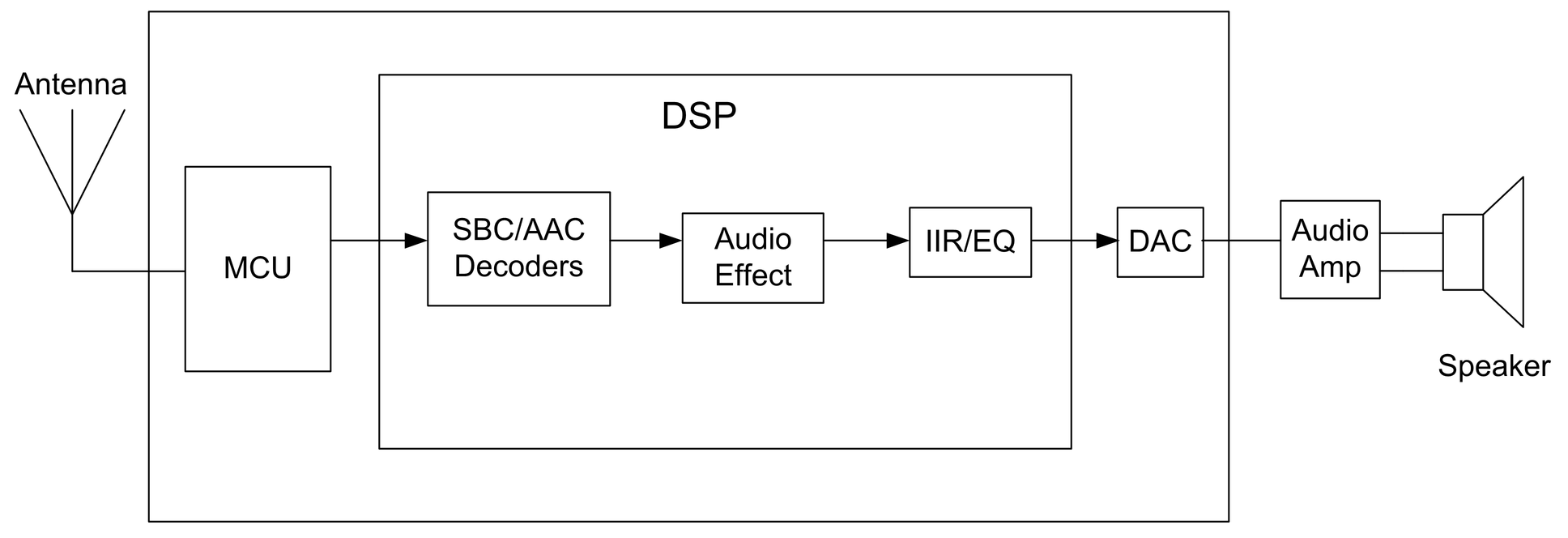3.1 Digital Signal Processor
A Digital Signal Processor (DSP) is used to perform speech and audio processing. The advanced speech features, such as acoustic echo cancellation and noise reduction are built in. To reduce nonlinear distortion and to help echo cancellation, an outgoing signal level to the speaker is monitored and adjusted to avoid saturation of the speaker output or microphone input. Adaptive filtering is also applied to track the echo path impulse in response to provide an echo-free and full-duplex user experience.
The embedded noise reduction algorithm helps to extract clean speech signals from the noisy inputs captured by microphones and improves mutual understanding in communication. The advanced audio features, such as multi-band dynamic range control, parametric multi-band equalizer, audio widening and virtual bass are built in. The audio effect algorithms improve the user’s audio listening experience, in terms of better quality audio after audio signal processing.
The following figures illustrate the processing flow of speakerphone applications for speech and audio signal processing.


The DSP parameters such as EQ, Speaker Gain, Mic Gain, Sound Effect and more are configured using the DSP tool. For additional information on the DSP tool, refer to the IS20xx/BM1x/BM2x DSP Application Note.
